34 wonderful castles in Germany
Castles in Germany belong to one of the most beautiful European fortresses. Most strongholds come from the Middle Ages and Romanticism. It is estimated that our western neighbors have about 20,000 castles, fortresses and palaces. Most of them have remained almost intact to this day. We decided to introduce you to the beauty of German castles and for this purpose we have compiled a list of 34 wonderful fortresses. We encourage you to watch and learn about interesting facts about these castles.
Johannisburg Castle

Johannisburg Castle is one of the most important buildings of the Renaissance period in Germany. The fortress is located in the Bavarian city of Aschaffenburg in Franconia. It was built in 1605 and 1614 by the architect Georg Ridinger. Until 1803, it was the second residence of the bishop of Mainz. The castle was almost completely destroyed in the last days of World War II. It took around twenty years to restore the building to its splendor.
Marienberg Fortress

The Marienberg Fortress is a symbol of Würzburg. Probably already at the turn of the Bronze and Iron Age on the hill was the first fortified settlement. Around 1200, defensive walls, an observation tower, an octagonal well and the palace of Bishop Konrad von Querfurt were built. Most of the current structure was built in the Renaissance and Baroque styles between the 16th and 18th centuries. The stronghold served as the residence of the bishops of Würzburg. It was & nbsp; severely damaged during World War II, and fully rebuilt in 1990.
Neuschwanstein Castle - see building description
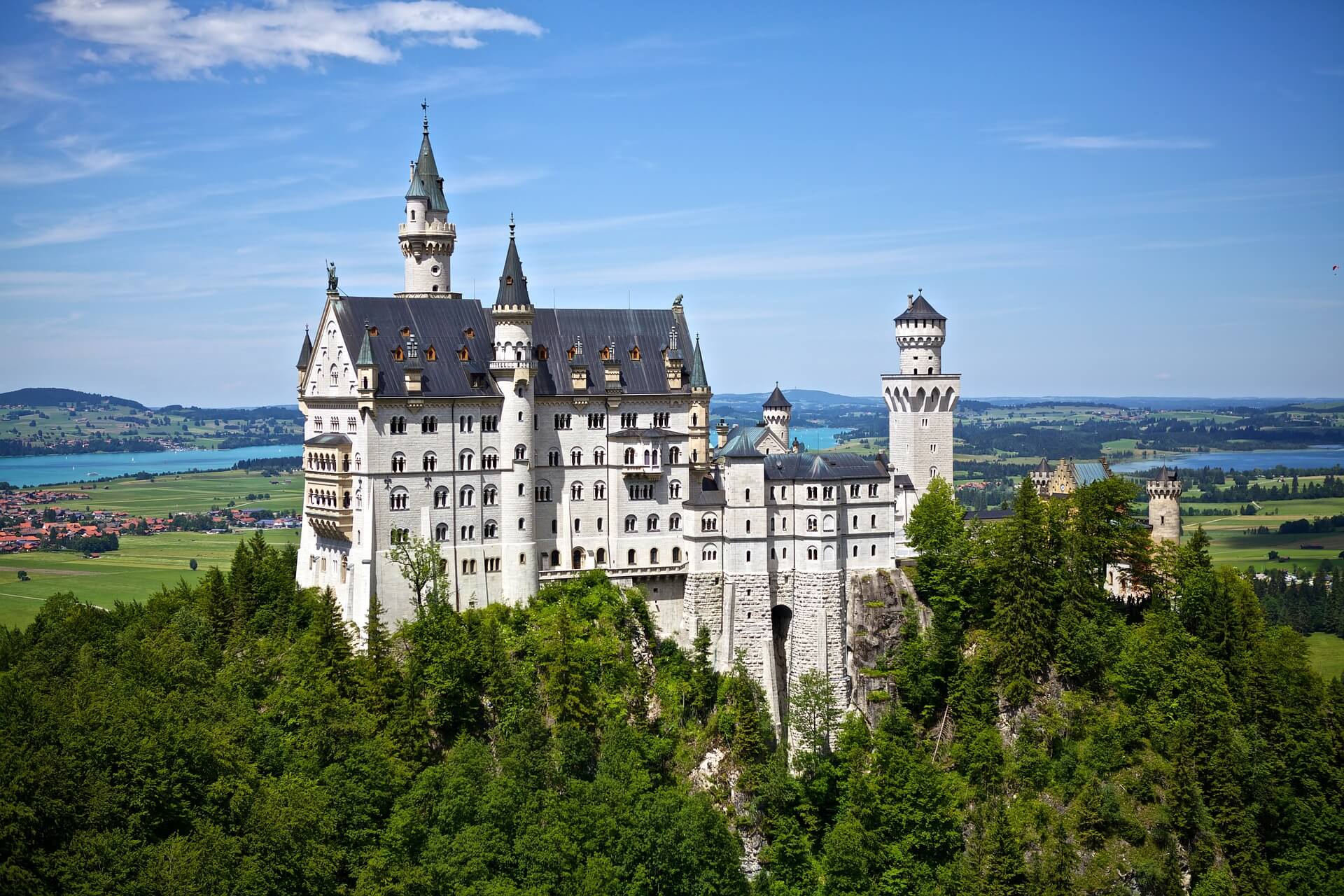
The Neuschwanstein castle resembles an unusual fairy tale castle. It was created in the 19th century for the Bavarian King Ludwig II Wittelsbach. It is one of the most famous castles in the world, which is visited by over a million tourists every year, and up to 10,000 people a day in the summer. The building is open to visitors throughout the whole year. In 2007, Neuschwanstein was on the list of finalists for the New Seven Wonders of the World and was ranked eighth. Actions have been taken since 2008 to place the palaces of Louis II: Neuschwanstein, Linderhof and Herrenchiemsee on the UNESCO World Heritage List.
Hohenschwangau Castle

Hohenschwangau Castle is the second most popular building in Germany. The fortress has a unique color and history. Hohenschwangau had its origins in the 12th century as the fortress of Schwanstein. The family of knights who founded the fortress died out before the 16th century. In 1832, Prince Maximilian II rebuilt the Schwanstein castle in the neo-Gothic style. After the construction was completed, Maksymilian used it as a hunting lodge and a summer residence.
Plassenburg

Plassenburg is one of the most impressive castles in Germany and the symbol of the Bavarian city of Kulmbach. Mention of the fortress dates back to 1135. It was destroyed in 1554 after the war. The castle was later rebuilt by the architect Caspar Vischer. It was used as a prison, military hospital and training center. For years, Plassenburg was considered an example of an ideal fortress. Today it works as a museum and place for cultural events.
Nuremberg Castle

Nuremberg Castle is located on sandstone rock in northern Bavaria. The fortress consists of three parts: Kaiserburg (Imperial Castle), Burggrafenburg (Burgraves buildings) and Reichsstädtische Bauten (city buildings on the east side). The castle, together with the city walls, is considered one of the most powerful medieval fortifications in Europe. During World War II, the altar of Veit Stoss, robbed from Kraków, was kept here.
Mespelbrunn Castle

Mespelbrunn Castle initially served as an ordinary house. It was built on the water and located in the Spessart forest between Frankfurt and Wurzburg. The castle is one of the most visited water castles in Germany and is often described in tourist brochures. The fortress in northern Bavaria is privately owned, but its owners open the facility to tourists throughout the year.
Coburg Castle

Coburg Castle is one of the largest castles in Germany. It is located on a hill above the city of Coburg. Within sight is another extremely interesting building Veste Heldburg castle. The location and shape of the fortress mean that the fortress is called the Franconia Crown. Currently, there is a museum with collections belonging to the princely family of Saxony-Coburg-Gotha which includes paintings, prints, armor, weapons and furniture.
Hohenzollern Castle - see building description

Hohenzollern Castle - a fortress in Baden-Württemberg, located 50 km south of Stuttgart. The castle was the heritage of the medieval Hohenzollern dynasty. The building is located on the top of a mountain, 855 meters high, near the Hechingen and Bisingen housing estates.
Callenberg Castle
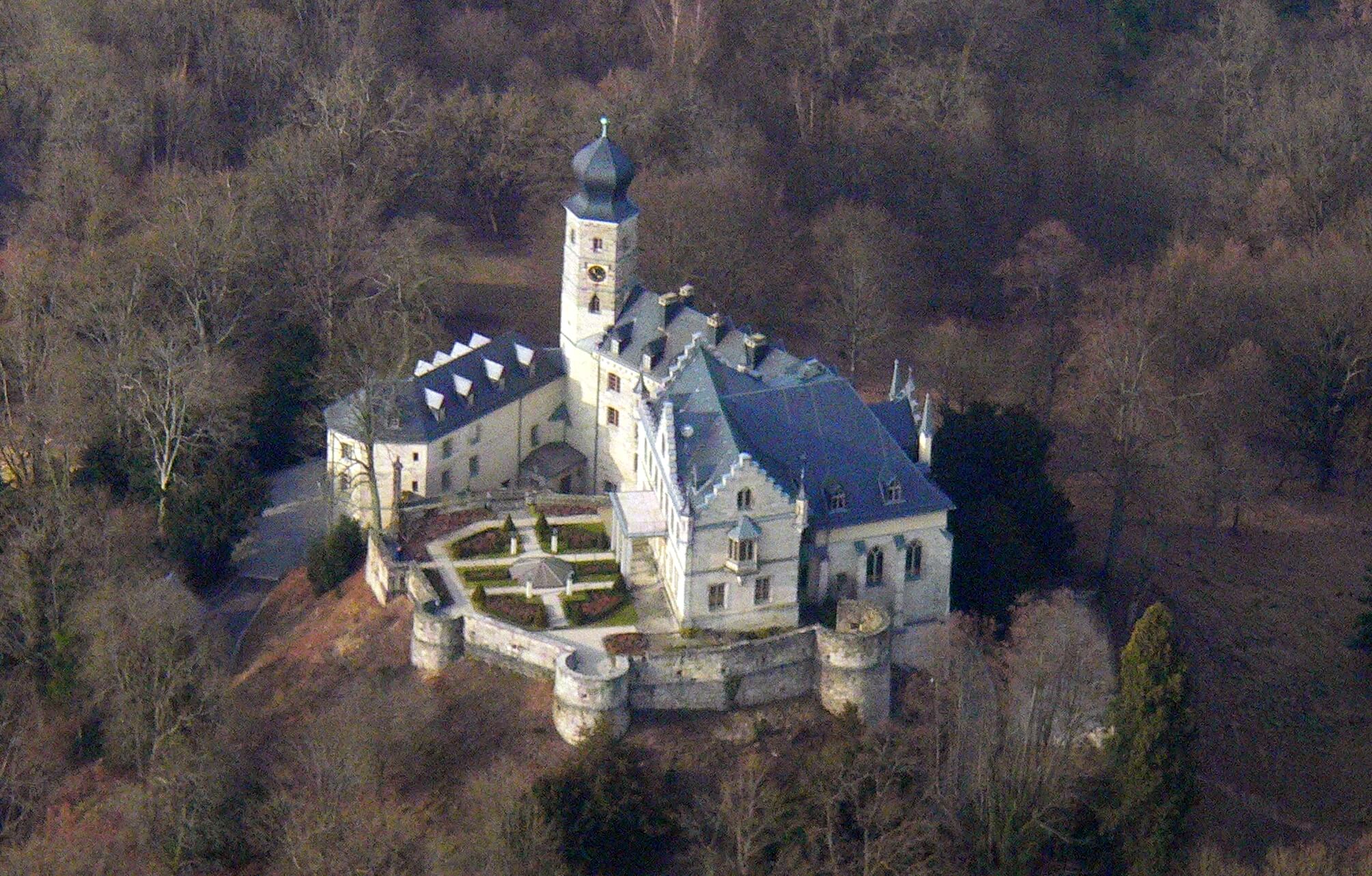
Callenberg Castle is located on a wooded hill near the city of Coburg. It once served as a hunting lodge and summer residence. After World War II, the castle fell into ruin. It was first used by American troops and later served as a nursing home that housed a technical college and then a foundation. From the end of 1970 the building stood empty and changed owners several times. Today it is privately owned and belongs to Andreas, Prince of Sachsen-Coburg-Goth. Because of its history and neo-Gothic architecture it is a monument.
Trausnitz Castle
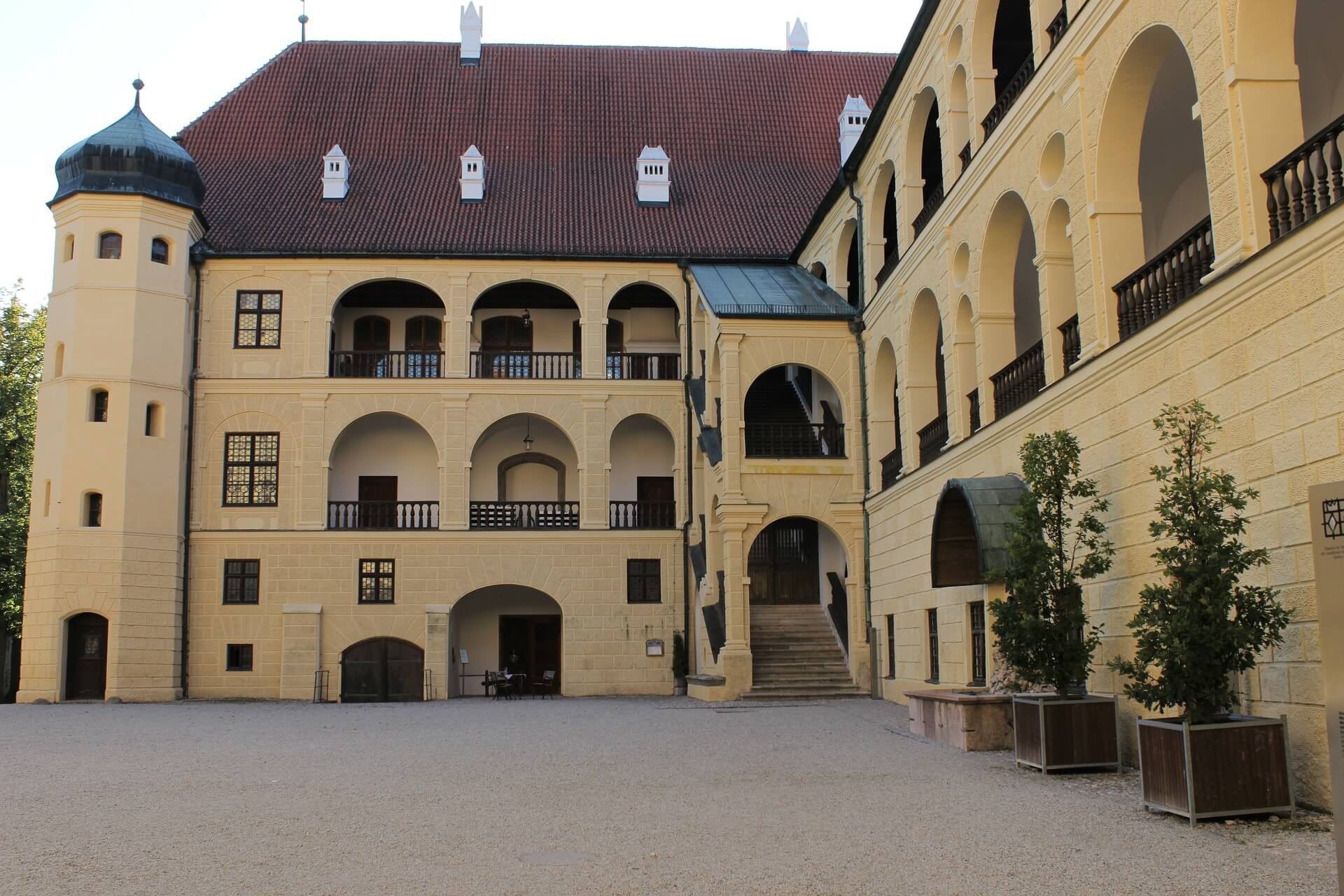
Trausnitz Castle - a medieval castle located in Landshut. It was the home of the Wittelsbach dynasty and served as a princely residence in Lower Bavaria, and later as the seat of hereditary rulers of all Bavaria. During the 18th century, the fortress was used as a barracks and prison. At the beginning of the 19th century it served as a hospital. The castle was restored after a fire in 1961. Contains princely treasures available to tourists.
Willibaldsburg

Willibaldsburg is a castle built around 1353 in Upper Bavaria. Until the mid-18th century it was the seat of the Eichstatt Diocese. In 1962, extensive modernization works began on the castle, gardens and Lake Willibaldsburg to restore the former splendor of this place. Today, the castle houses the Jurassic Museum.
Burghausen Castle

Burghausen Castle is one of the longest castle complexes in the world. This Bavarian castle is 1043 m long and has six courtyards. In the Middle Ages it was one of the strongest fortresses in Germany. This well-preserved castle is known for its collection of late Gothic paintings and plates. It is open to visitors, as well as to public events, including weddings.
Heidelberg Castle

Heidelberg Castle is located on a hill, overlooking the old city center. The fortress had a long and turbulent history. Its earliest structures date from the 13th century. The castle was completely destroyed during the Thirty Years War, and later by the French in the 17th century. In 1764 the stronghold was struck by lightning. Later, the stones from the castle were used to build new houses in Heidelberg. All subsequent reconstructions led to the creation of the castle in various architectural styles, which adds additional charm to the fortress.
Liechtenstein Castle

Lichtenstein Castle is located on a cliff at the foot of the Swabian Alb. The original fortress was founded here in the 12th century, but over time it fell into ruin. The current castle was built in the 19th century in honor of the medieval knights of Liechtenstein. The castle has a large collection of antique weapons and armor. The unusual design was the inspiration for the creation of other German fortresses.
Heiligenberg Castle
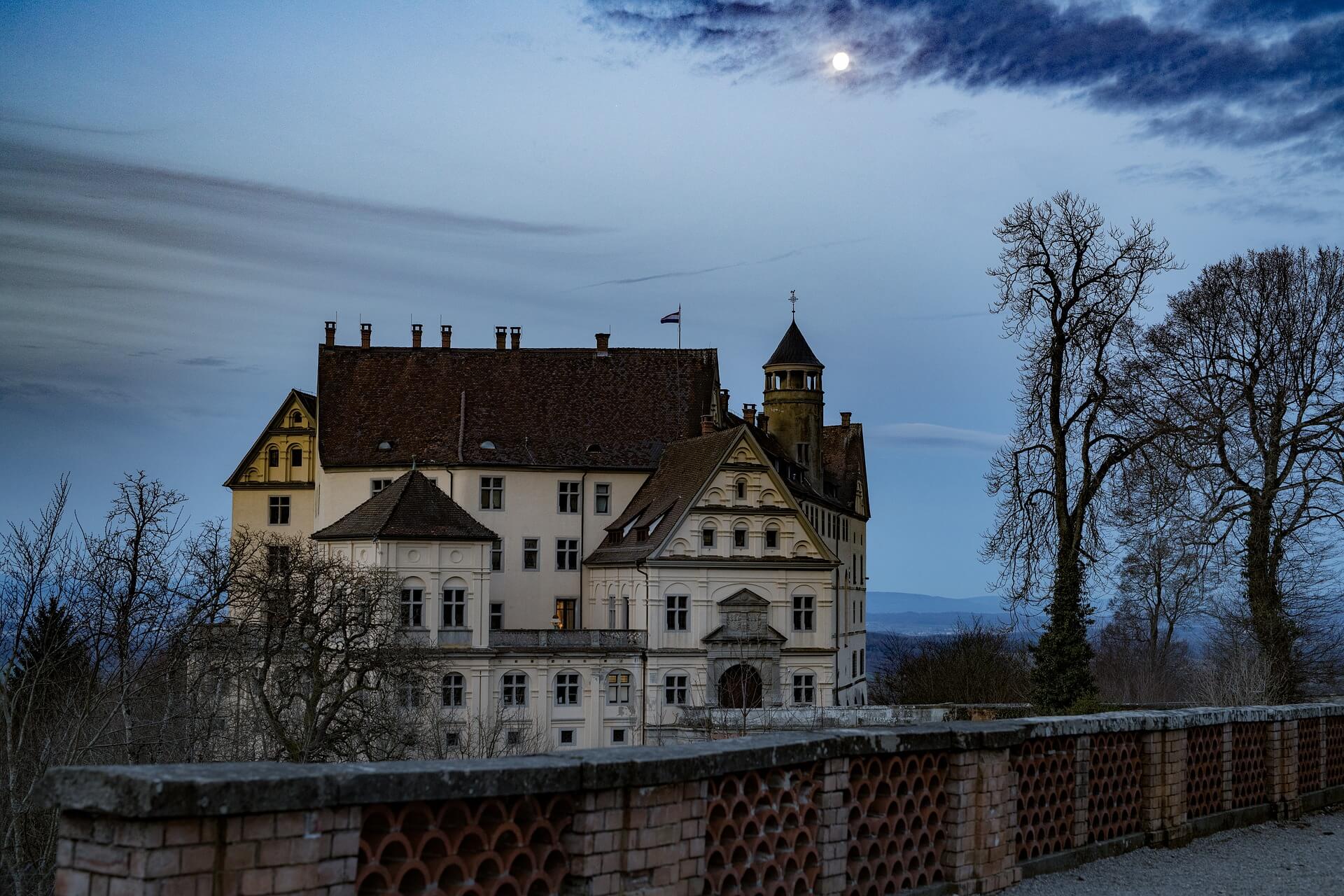
Heiligenberg Castle is a Renaissance fortress located north of Lake Constance. It is owned by the Fürstenberg family and has been located on a plateau 730 meters above sea level, with views down onto Lake Constance and the Alps. The castle was built in the Middle Ages - in 1250, and at the end of the era it was expanded. Later, a courtyard and south wing were added.
Sigmaringen Castle

Sigmaringen Castle is the former residence of the princely family of Hohenzollern-Sigmaringen. The original fortress was founded here in the 11th century. The stronghold was seriously damaged in 1893. The fire consumed a large part of the building, leaving only the towers in good condition. After the reconstruction, the castle became a temporary seat of the collaborative Vichy government evacuated from France. Currently, part of the fortress is a museum open all year round, having the largest private collection of old weapons in Europe.
Frankenstein Castle

Frankenstein Castle was built around the 13th century on a hill overlooking Darmstadt. Many believe that the fortress was an inspiration to Mary Shelley, who wrote the Gothic novel Frankenstein in 1818. Various legends revolve around the castle, including that the building was haunted for centuries or that an early inhabitant died here after a battle with the dragon. Today, the castle hosts one of the largest Halloween festivals in Europe.
Marienburg Castle

Marienburg Castle is a neo-Gothic fortress near Nordstemmen in Lower Saxony. The castle was built in the years 1858-1867 as a birthday present for the wife of King George V Marie SaxeAltenburg. Part of the fortress is open to the public, including Castle museum, chapel, restaurant and can be booked as wedding, party or concerts. In 2005, an auction of antiques and works of art was organized at the castle. The proceeds from the auction were allocated to the renovation of buildings.
Schwerin Castle
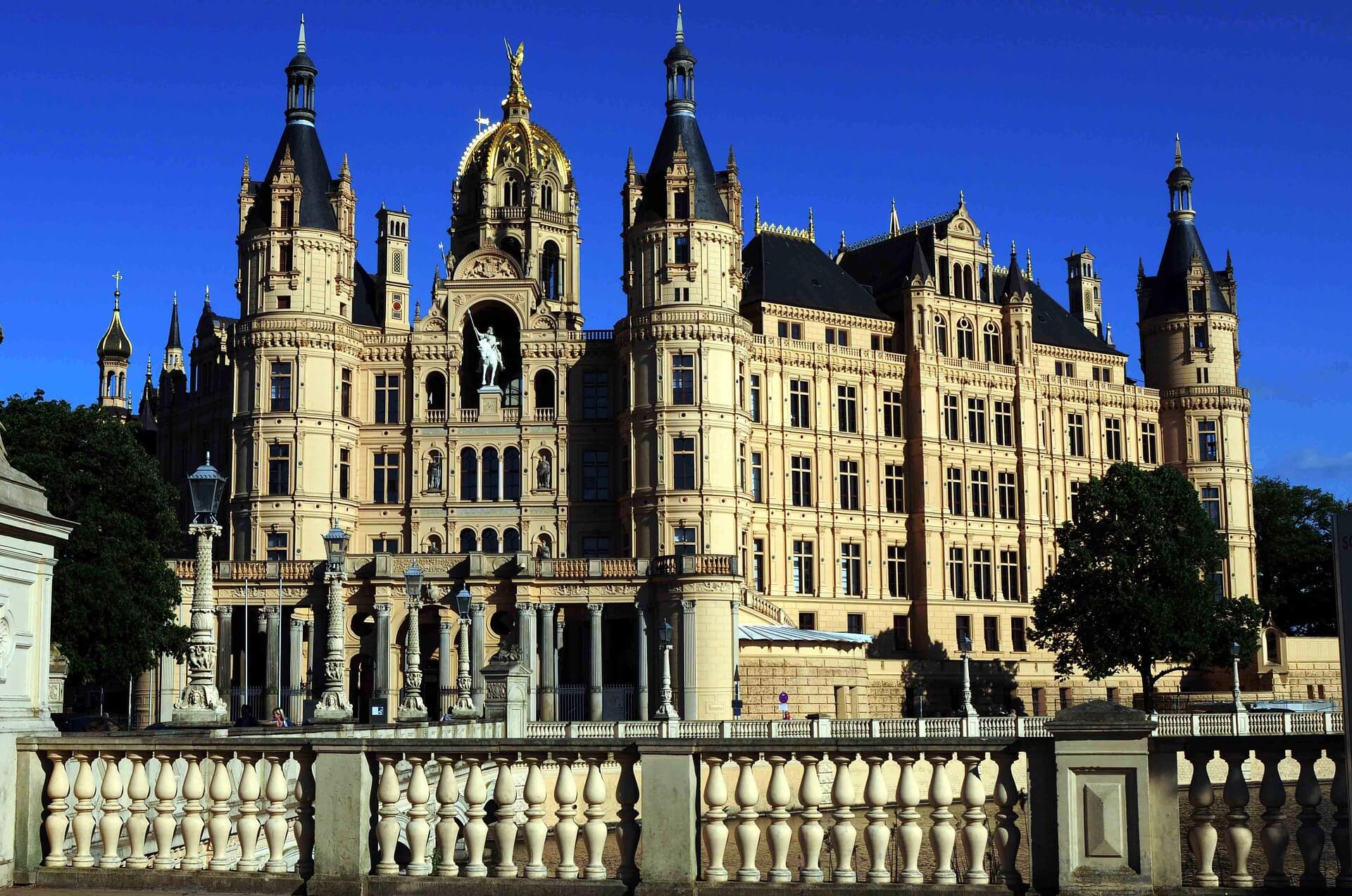
Schwerin Castle is a neo-Renaissance building considered one of the most important German fortresses. The original castle was built here in the 10th century. The current fortress was completed in 1857. built in the nineteenth century on the island. For centuries it was the residence of the princes and grand princes of Mecklenburg and Mecklenburg-Schwerin. Since 1990, the Parliament of Mecklenburg has been established the Front Pomeranian. Part serves as a museum and is open to the public.
Moyland Castle
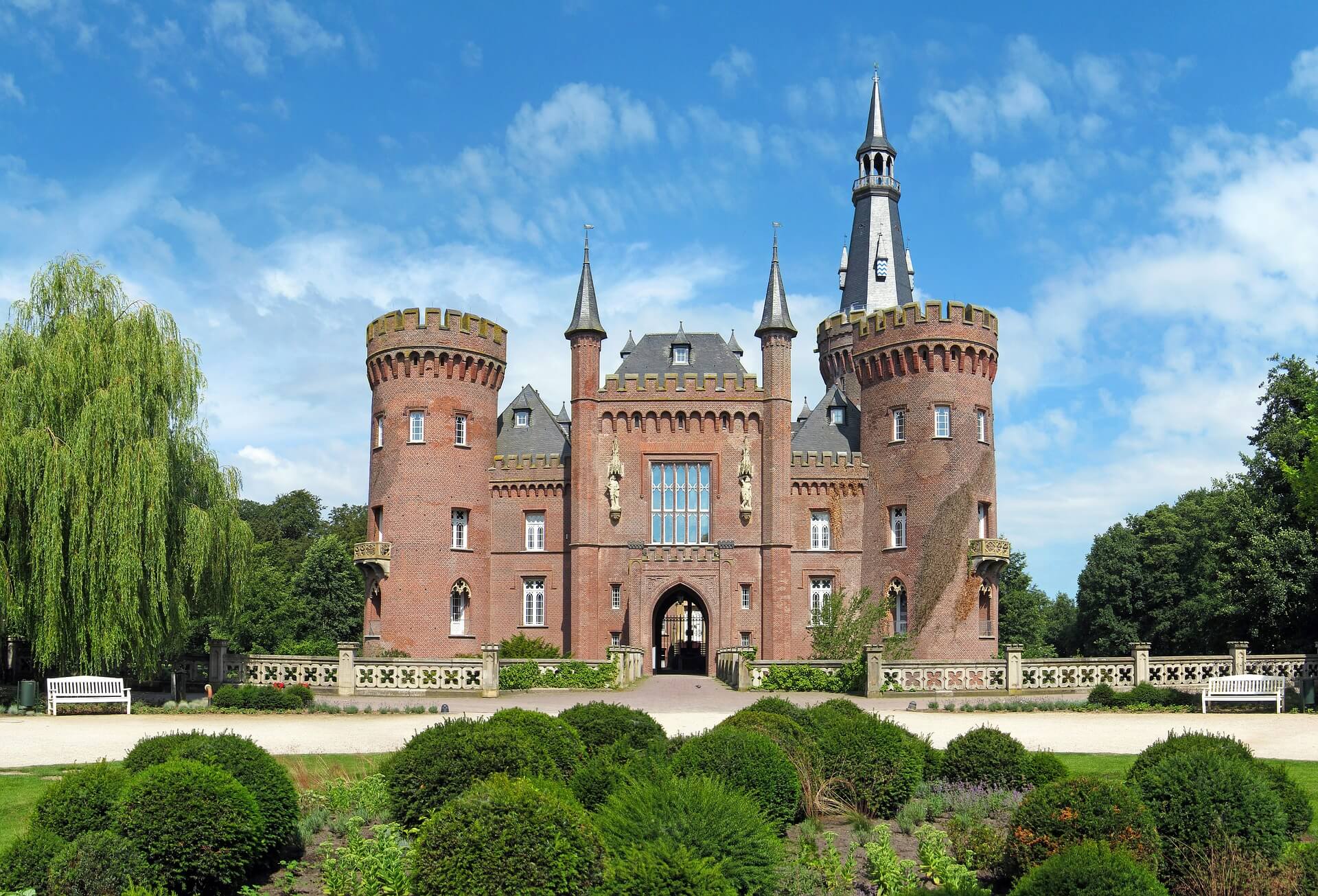
Moyland Castle is located on the water in Bedburg-Hau. The building is one of the & nbsp;
of the most important neo-Gothic strongholds in North Rhine-Westphalia. At the end of World War II, it was seriously damaged. It took a long time before funds were found to rebuild the castle. Today it houses a museum containing a rich collection of van der Grinten brothers art.
Drachenburg Castle
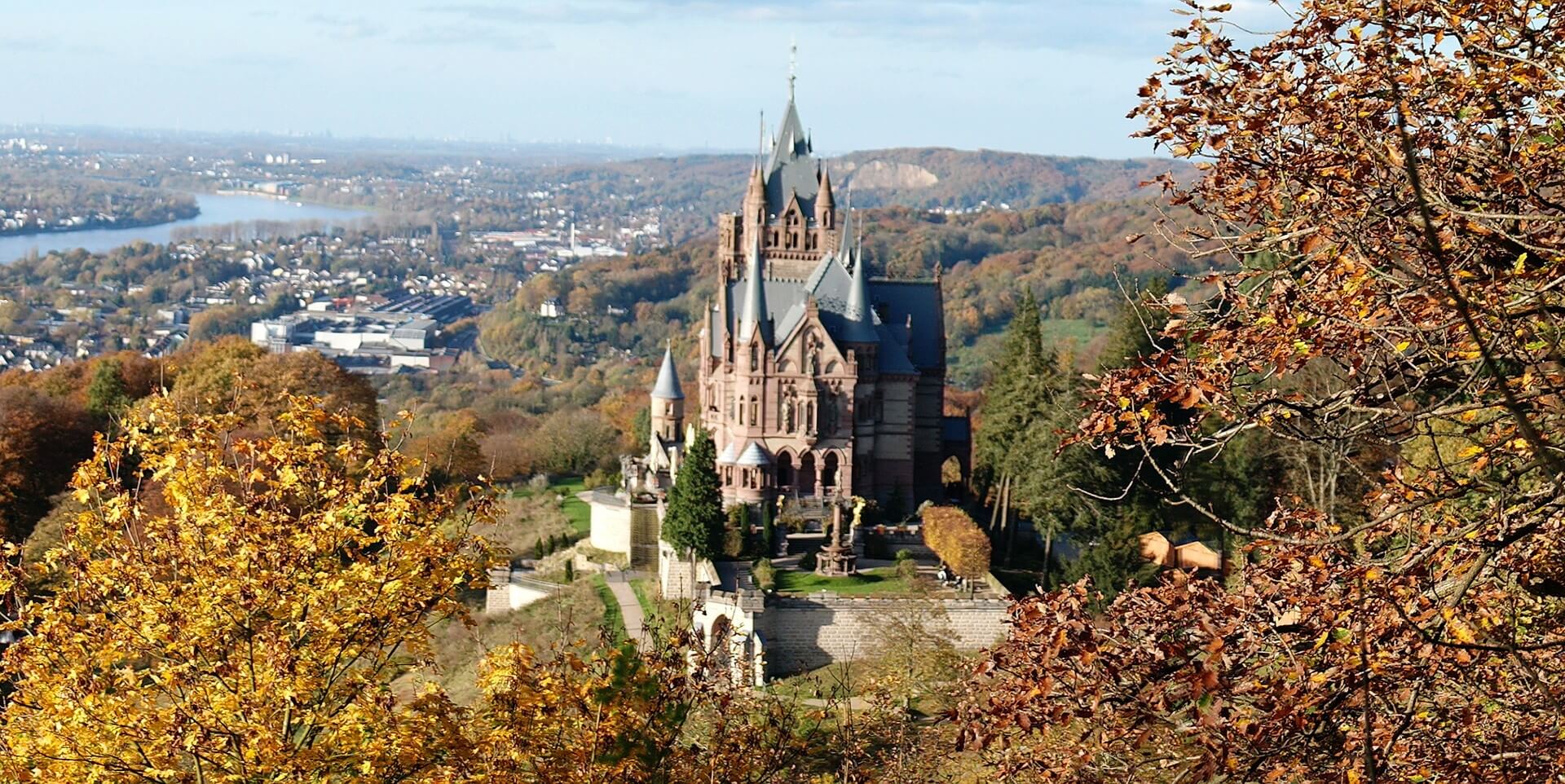
Drachenburg Castle was built in 1882 - 1884 at the request of Baron Stefan von Zarter. The building located in the middle of a large park is decorated with wall paintings and tapestries that depict scenes from the heroic past of Germany. In later years, the castle served as a boarding school, railway school, and even a military school. The devastating fortress was to be demolished, but on the eve of destruction there was a private sponsor. From 1995 to 2005 extensive conservation work was carried out to restore the old appearance.
Cochem Castle
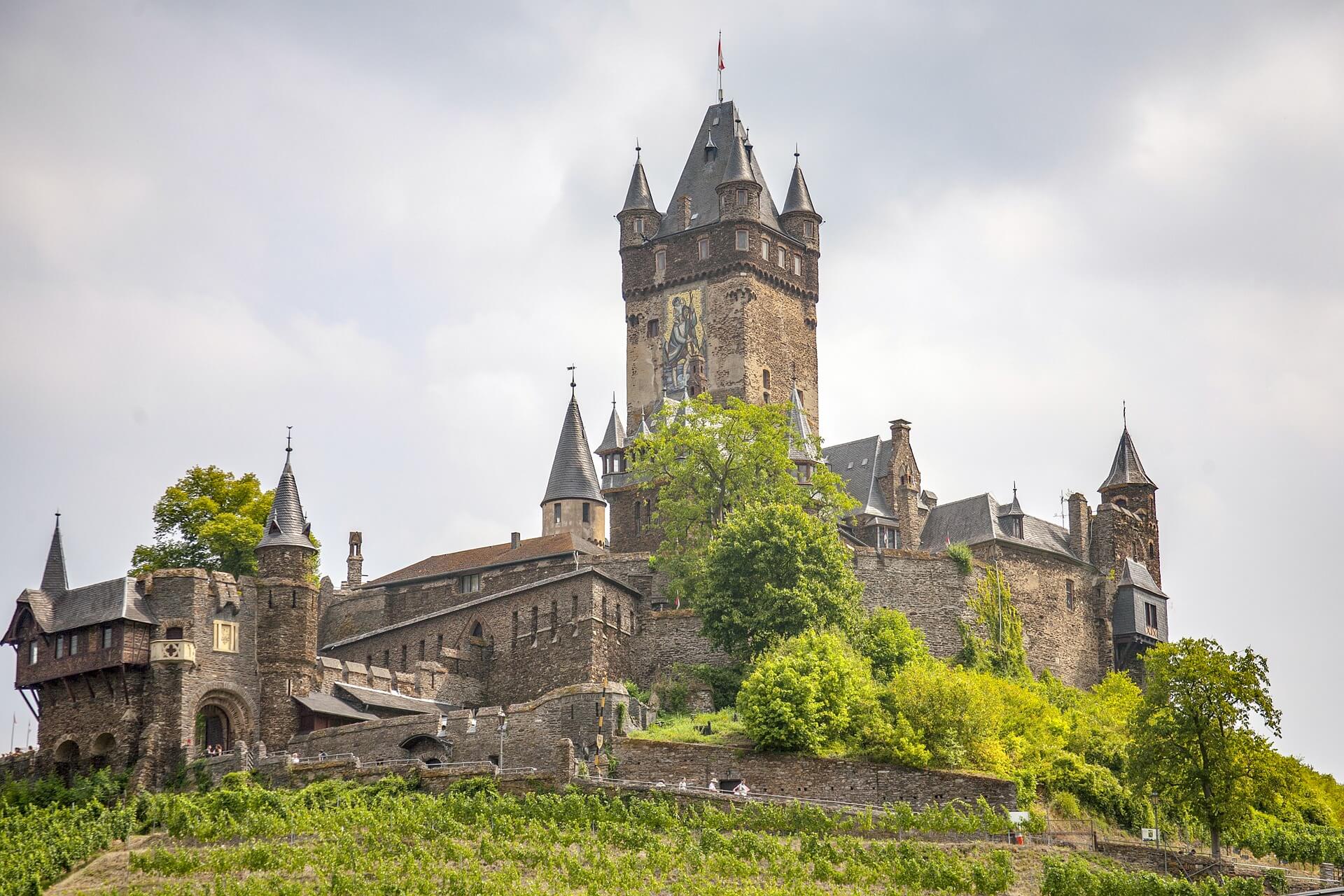
Cochem Castle is a former imperial fortress located on a hill, 100 meters above the city. The building had a long and colorful history. According to the latest research, the original stronghold was established in the 11th century. In 1689, the castle was destroyed and remained in ruins for 180 years. The remains of the fortress were bought by a rich merchant and decided to rebuild. In 1877, the castle was built as a summer residence. Currently, it houses a museum. The castle has 50 rooms available for visitors and decorated in neo-renaissance and neo-baroque styles.
Eltz Castle

Eltz Castle is a medieval fortress located in the mountains bordering the Moselle valley. The facility was probably built at the beginning of the 12th century on a rocky promontory overlooking the Eltzbach river. The castle was divided between three brothers Elia, William and Theodoric, where he lived with his families and employees. In the years 1845-1888, large-scale construction works were carried out to carefully restore the former appearance of the fortress. In the summer, from April 1 to November 1, daily tours of approximately 40 minutes take place here.
Moritzburg Castle
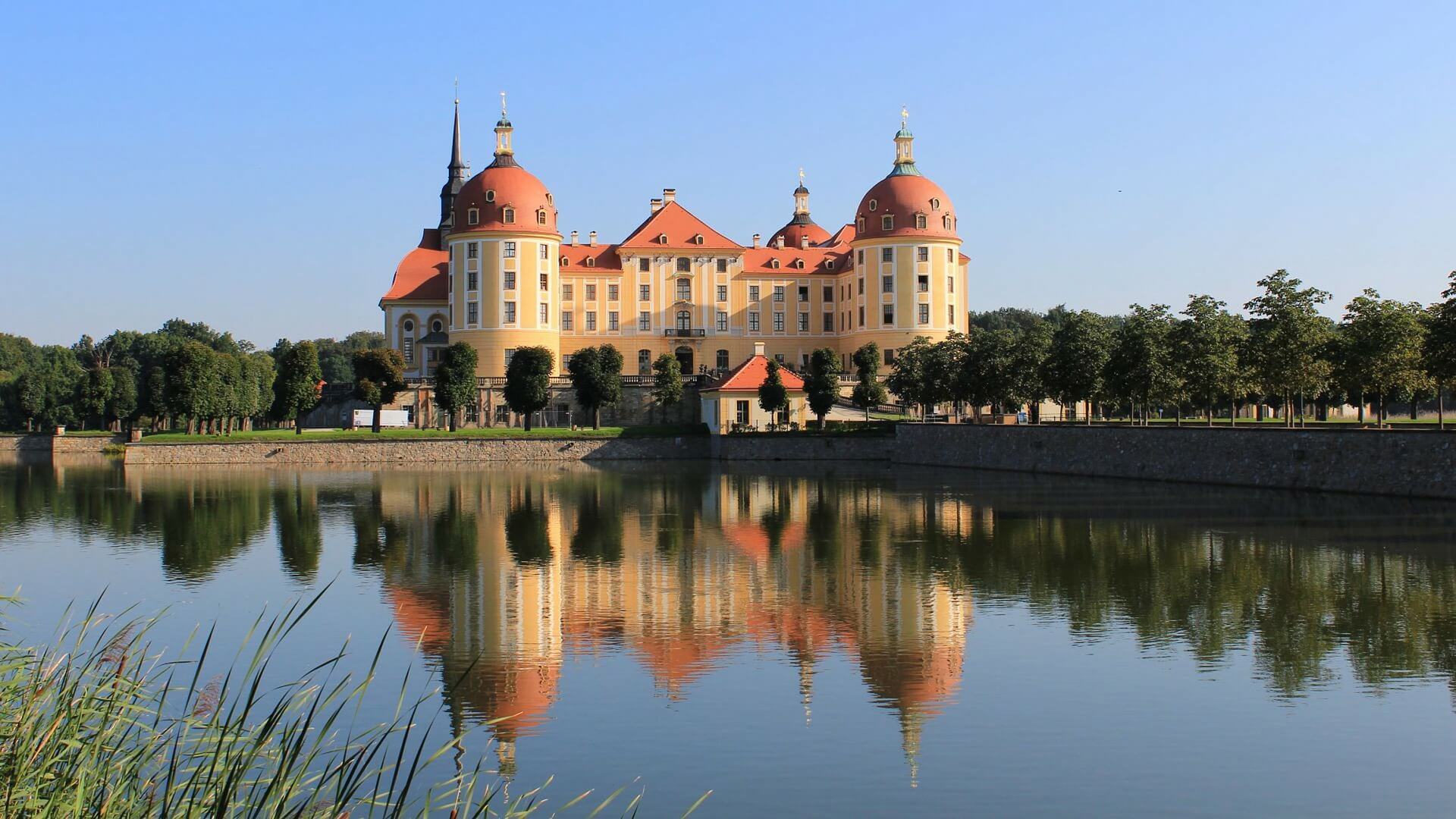
Moritzburg Castle is located about 14 km north of Dresden. The original building was built in the years 1542 - 1546 as a hunting house and maintained in the Renaissance style. During the reign of Frederick August the Strong, the building underwent a thorough transformation inside and outside. The hunting house turned into a baroque fortress with four corner towers. The castle has a rich collection of trophies, but also Chinese, Japanese and Meissen porcelain.
Stolzenfels Castle

Stolzenfels Castle was founded in the 13th century and served as a toll station for boats and ships navigating on the River Rhine. Over the years, the building was systematically expanded. The strongholds were used in warfare. In 1689 the castle was destroyed by the French and was unusable until the 18th century. After a while it was renovated and served as the summer residence of the King of Prussia. In 2002, the building was inscribed on the UNESCO World Heritage List. After a significant renovation of the castle and its park, it was re-opened to the public in 2011.
Reichenstein Castle
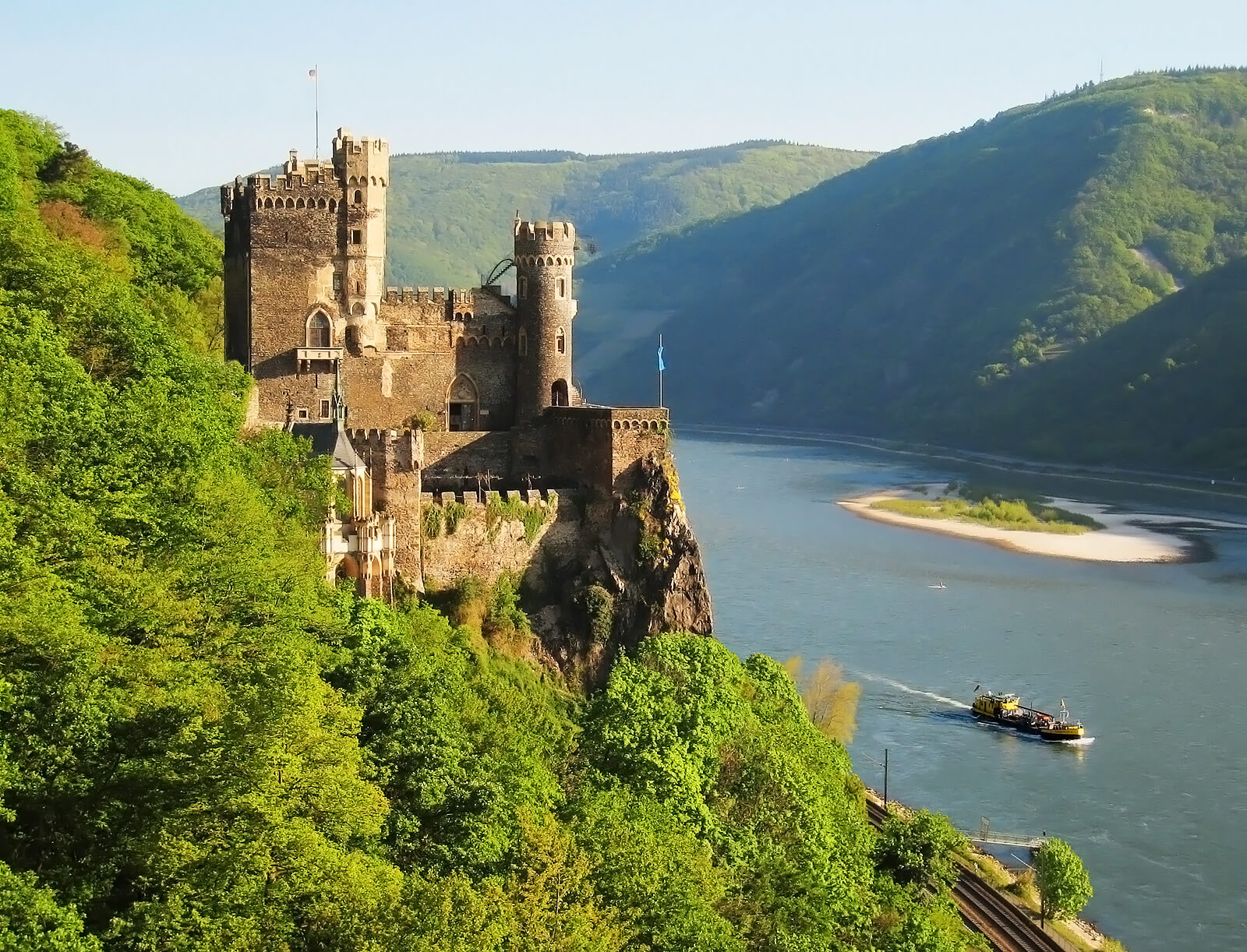
Reichenstein Castle was built to defend the city of Aachen against invasions at the beginning of the 11th century. At the end of the next century, several generations of barons who lived in the castle began imposing illegal tolls on ships and carriages in the Rhine area. Their actions later led to the destruction of the building. In the following centuries, the castle was destroyed several times and rebuilt in various styles. Currently, the fortress has dark stone walls, narrow windows and battlements of defensive walls, which creates an unusual atmosphere.
Colditz Castle
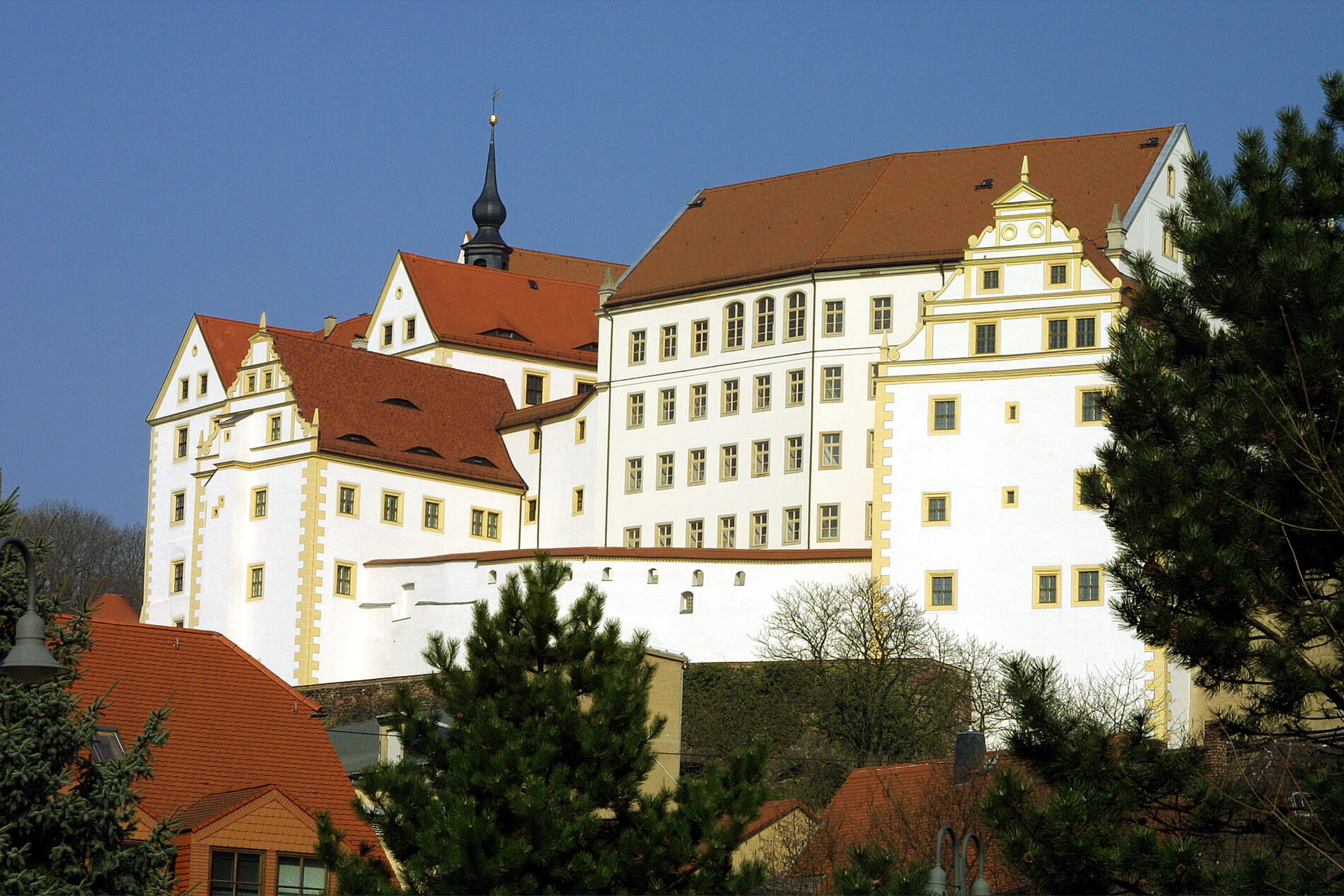
Colditz Castle, founded in the 12th century, is located near Dresden and Leipzig. He gained international fame as a prisoner-of-war camp during World War II. Among the prisoners were primarily "incorrect" Allied officers who had escaped from other camps many times. For almost 100 years, from 1829 to 1924, Colditz served as a sanatorium, generally reserved by rich people. In the years 2006 and 2007 the castle underwent a significant number of renovations and renovations. The castle walls were repainted to reflect the appearance before World War II.
Königstein Fortress

Königstein Fortress - the largest German stronghold located on a hill above the Elbe Valley in the Saxon Switzerland region. The history of the castle dates back to at least the beginning of the 13th century. Over time, the building was regularly expanded. Currently, the wall around the fortress is 1800 meters long, and at the highest point reaches 42 meters high. The fortress, which has been used as a state prison for centuries, is still intact and is now one of Saxony's leading tourist destinations with approximately 700,000 visitors annually.
Marburg Castle

Marburg Castle is one of the most unusual buildings in the German city of Marburg, in the state of Hesse. Its construction dates back to the 11th century. In addition to its historic character, the fortress enjoys great interest due to the fact that it was the first capital of Hesse. Located on a red sandstone hill, overlooking the city, at an altitude of 287 meters. Currently, the castle is used in some parts by the University of Marburg, as well as the cultural history museum in Wilhelmsbau and is used to organize cultural events.
Altena Castle

Altena Castle - a fortress built by the first counts of Berg at the beginning of the 12th century. In 1912, Richard Schirrmann established the world's first youth hostel that still operates today. Every year on the first weekend of August a great medieval festival takes place in the castle and in the city. There is a museum in the castle. Visitors to the building can learn about numerous works of art.
Stahleck Castle
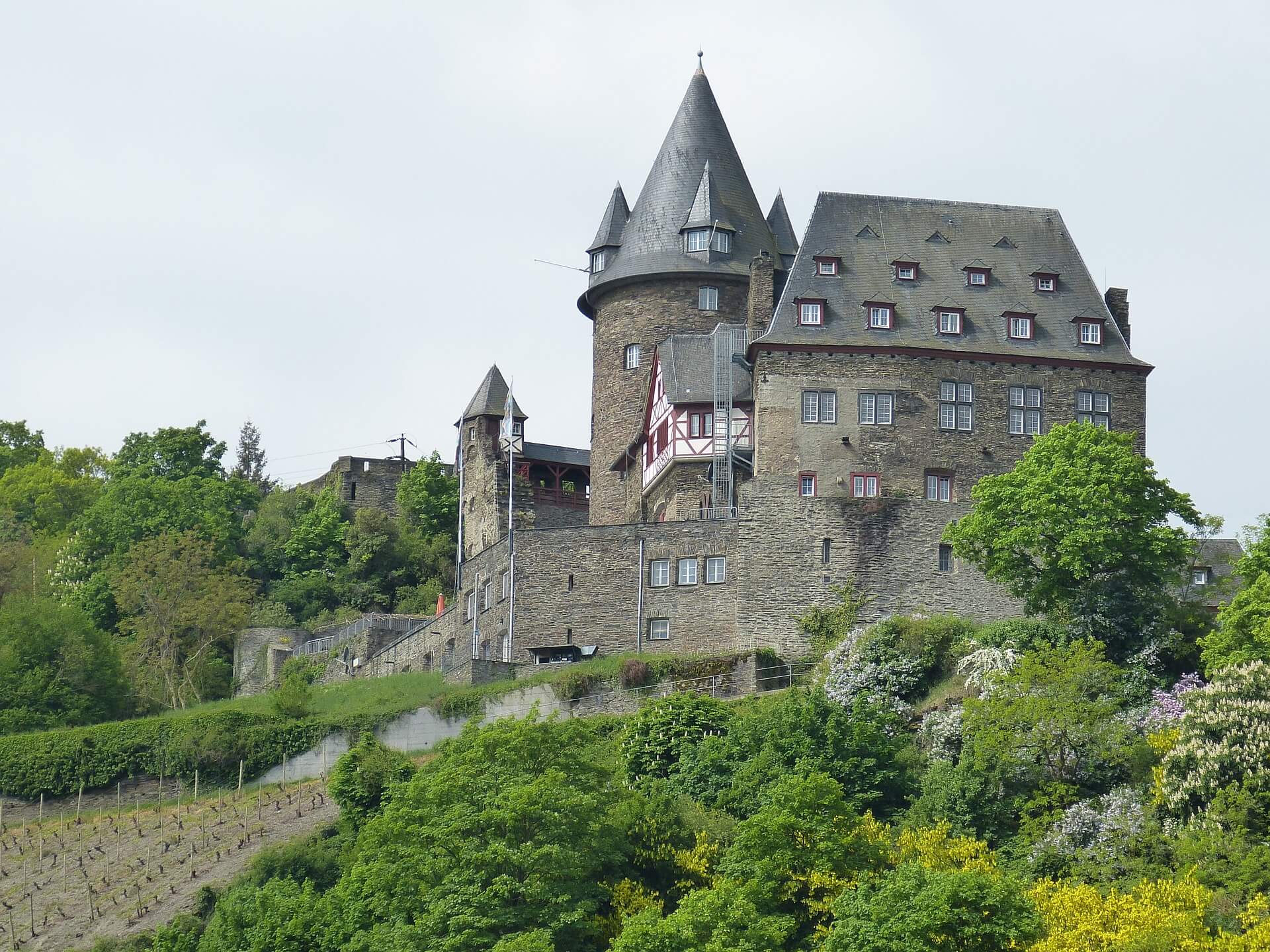
Stahleck Castle - 12th century defensive fortress in Bacharach in Rhineland-Palatinate. The building is situated on a rock about 160 meters above sea level. The castle was built on the orders of the Archbishop of Cologne, was destroyed at the end of the 17th century and rebuilt in the 20th. Currently, the fortress serves as a hostel and is not available to visitors. The only exception is the courtyard - publicly available and offering a beautiful view of the Rhine.
Lahneck Castle

Lahneck Castle is a medieval fortress located in the city of Lahnstein. The building stands on a steep rock above the confluence of the Rhine rivers. The fortress became known by the death of Idii Dubb in June 1851. While on vacation with the family, a wooden staircase collapsed under a 17-year-old girl. No one heard her crying or calling for help. She was found only years later, in 1860, and her diary after a few weeks in the castle wall. Since 2002, Lahneck has been part of the Unesco World Heritage of the Upper Middle Rhine Valley.
Marksburg Castle
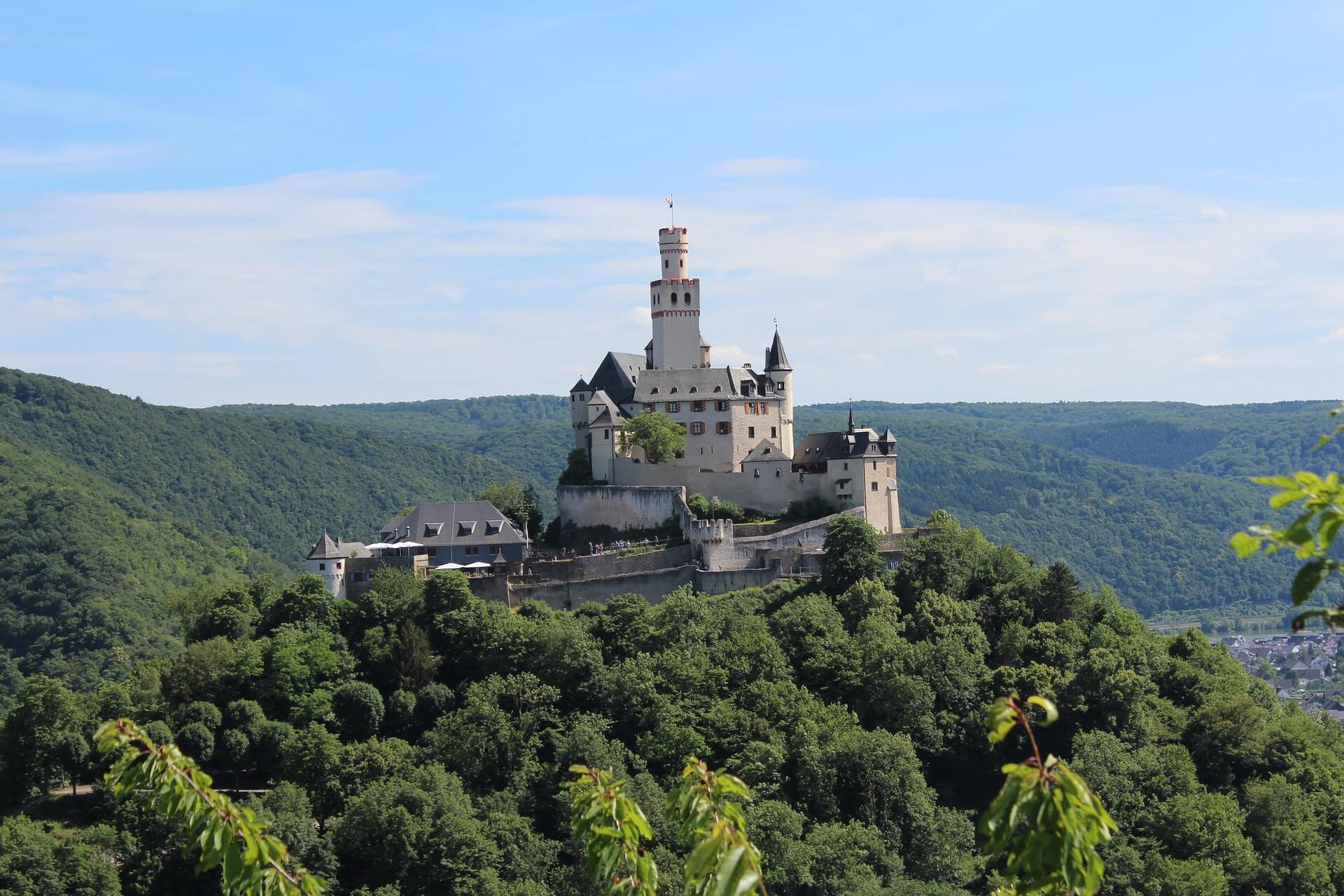
Marksburg Castle is a fortress built for protection, not as a residence for royal families. Of the 40 hill castles between Bingen am Rhein and Koblenz, Marksburg was the only one that was never destroyed. The castle has a museum with equipment collected since 1900. It is estimated that around 6,000 people visit them every day in the summer.
Presentation of all castles on the map:
Reviews about 34 wonderful castles in Germany Add comment